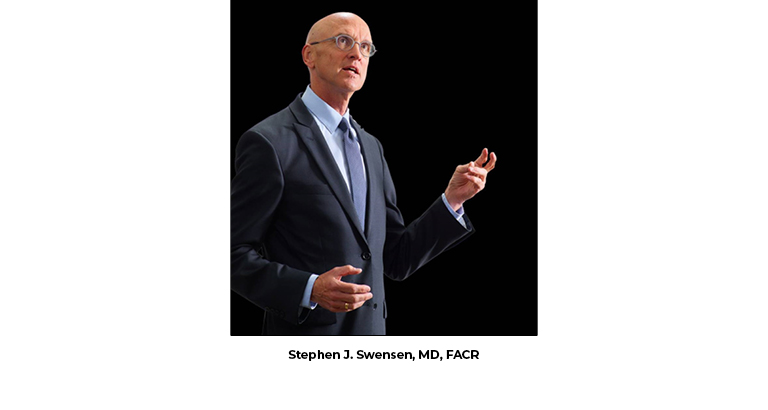Burnout was already a pervasive problem in medicine before the onset of COVID-19. Now, more than a year into the pandemic and a return to “normal” not yet a reality, radiologists and their teams face unprecedented new stressors in the challenge to combat work fatigue.1
“Professional burnout is an epidemic in America and in other Western countries,” says Stephen J. Swensen, MD, FACR, senior fellow at the Institute for Healthcare Improvement and professor at the Mayo Clinic. “In China, the numbers are even worse than they are in America. It’s pervasive on the planet — and the healthcare profession is among the worst.”
As part of his quest against burnout, Swensen co-authored a book, Mayo Clinic Strategies to Reduce Burnout: 12 Actions to Create the Ideal Workplace, which pinpoints commonalities in those who experience burnout: They may be emotionally exhausted; have lost confidence in their work; be more likely to make a medical error; be more likely to have patients who have a bad experience or poor outcomes; more likely to abuse substances; more likely to have troubles with relationships; and be less likely to feel empathy. Swensen shared his perspectives and lessons learned about managing burnout during his guest appearance on the RLI Taking the Lead podcast (listen at acr.org/RLI-Swensen).
The Bulletin spoke with Swensen about his work — and the five behaviors that all leaders can practice now to boost morale, improve well-being, and reduce burnout among their teams.
How did you come up with the five behaviors in leaders that build esprit de corps for the team and increase individual well-being?
At the Mayo Clinic, we survey all 65,000 staff — from custodians to accountants to CEOs to nurses and doctors — on leadership and well-being every year. For close to 15 years, we’ve been asking our Mayo Clinic staff the same 12 questions about the leader to whom they report. The thought was that there is a connection between leaders and morale — and the data confirmed this in spades.2 We found an amazingly strong and significant correlation between how staff assessed their immediate leader and the morale, fulfillment, and professional burnout of team members. And the 12 questions basically boiled down to five behaviors (see sidebar).
So 12 questions on a Likert scale of 5 points means the best leaders could get up to 60 points, if their staff rated them 5 out of 5 on every question. Just to give you an idea of how powerful this is — for every 1 point tick upwards, out of 60 total points a leader could receive from the confidential and anonymous survey of their staff each year, there is an 11% increase in professional fulfillment and satisfaction and a 7% reduction in professional burnout.
We’re in a time when we need our leaders more than ever, so we should double down on supporting and developing our leaders.
What can radiology leaders do in the wake of the pandemic to reduce burnout among their staff?
Burnout has gotten worse during the pandemic. All of us are more socially isolated, and humans are social beings — we need that kind of contact. This is compounded for those of us in healthcare by all the stresses of more patients who are sick and dying in our hands, often without the resources we need to take care of them.
We’re in a time when we need our leaders more than ever, so we should double down on supporting and developing our leaders.
Leaders need to have the right staffing models, support, and rotations so that their staff can get a break. Leaders need to facilitate the opportunity for staff to spend time with each other — which is one of the keys to reducing burnout — and support their time at home with family and friends. I think when we look back at this pandemic era, we’ll see that the organizations and teams that thrived in it were those that had leaders who work with staff — not to do everything for them, but to do everything with them, so they co-create the best response to challenges.
Do you have any advice for anyone experiencing burnout?
I would encourage radiologists experiencing burnout to connect with other colleagues and share their thoughts and feelings with someone who’s willing to listen. That can be therapeutic in itself — but it can also lead them to connect with someone (perhaps their boss or immediate supervisor) who can get them to the next level of support.
Our survey findings show how leaders can improve and become better at what they’re supposed to be doing — engaging staff. So what we can do for each other is to listen and get professional help for the people for whom burnout has gone into a really bad place.

